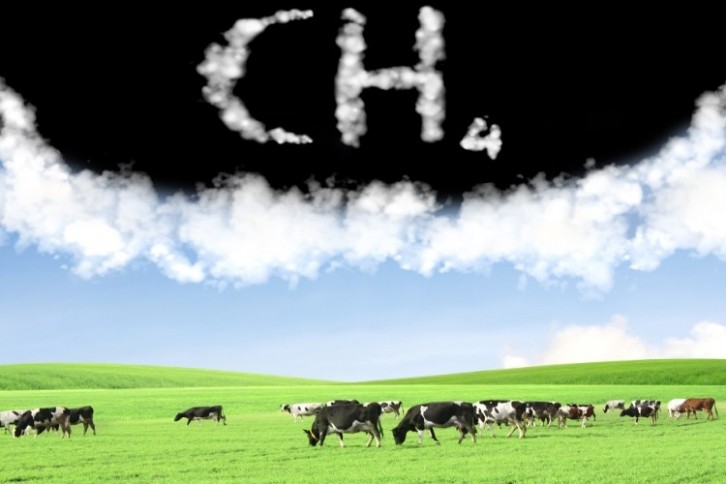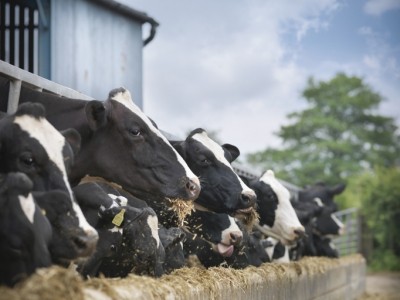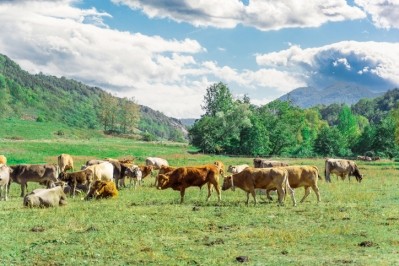Danone’s Global Methane Hub partnership ‘welcome’ but more firms must act – Changing Markets Foundation

Last week, dairy major Danone made headlines by becoming the first corporate funder of the Enteric Fermentation R&D Accelerator, a globally-coordinated research venture coordinated by the Global Methane Hub. The news comes close to a year after the French company announced a 30% absolute methane emissions reduction target from fresh milk, pledging to remove 1.2m tons of carbon dioxide equivalent of methane emissions by 2030.
As part of its Global Methane Hub work, Danone said it will cooperate with academics and technology providers to test methane mitigation solutions, in order to build a body of work that would aid in regulatory compliance, and drive innovation across different farming systems. The Accelerator focuses on technical solutions for livestock farming such as feed additives, plant and animal genetics, methane vaccines and measurement technologies, and has raised $200m in funding.
Danone also said it would trial a methane accounting and feed optimization decision support tool for dairy farming, with a pilot program set to take place at smallholder farms in North Africa. The goal of this is to show how improved livestock nutrition can increase productivity and farmer profitability while decreasing methane emissions.
DairyReporter contacted the Changing Markets Foundation, a non-profit organization which leads a campaign focused on the need to reduce methane emissions from livestock agriculture, to find out how the French food giant’s involvement in the Global Methane Hub stacks up.
Asked if this initiative and Danone’s involvement in it can truly help move the needle on methane reduction from food and agriculture, Alma Castrejon-Davila, senior campaigner at Changing Markets Foundation, told us that the Global Methane Hub “has been trusted to lead on the global efforts to rapidly cut methane emissions, and they have been leading great work on waste and energy so far. It’s great to see movements to reduce methane emissions in agriculture, which has been so far missing from the global methane puzzle. Time will tell if these efforts achieve their intentions.”
But with much of the Hub’s work based around R&D and future innovation, we asked what timescales should be hit in order to make a meaningful change in the long run. “The science has been clear that in order for us to stay within the 1.5C limit, we need to rapidly cut methane emissions this decade (by 2030),” Castrejon-Davila told us.
“We welcome Danone’s leadership to support efforts to cut methane emissions,” she added. “They have been the only dairy company to set up a methane target and committed to do separate reporting - which is an effort others must follow.”
The senior campaigner criticized Nestlé, the world’s largest food group, for failing to set out similar objectives. “We still see big names missing from the list of companies who should be acting to reduce their methane emissions. One big household name is Nestlé, who consider themselves climate leaders but who are yet to follow on Danone’s footsteps. We need more companies to set up methane reduction targets and develop strong plans on how they will achieve these.”
DairyReporter notes that Changing Markets released an analysis of Nestlé’s net-zero strategy, where the NPO highlighted that the majority of the CPG giant’s emissions were methane due to the food group’s focus on dairy ingredients. The not-for-profit organization concluded: “Without a greater focus on methane and shifting to plant-based protein, Nestlé’s net-zero strategy will ultimately fail to make a meaningful dent in its huge emissions,” adding that Nestlé ‘could turn this around’ by taking a range of actions, including setting out absolute targets for each scope of emissions and reporting against its 2018 baseline rather than a business-as-usual scenario. Readers can find the report in full here.
With dairy companies being often criticized for leaning too heavily on methane mitigation tools such as feed additives, Castrejon-Davila admitted that such solutions do have a limited scope. “At this point in time, we need to use all the tools in the toolbox to make sure we cut methane emissions within this decade,” she said. “But technical solutions will only take us so far - our research on methane reduction potentials in Europe showed that changes in animal feed and additives have a potential reduction of 1%-12%.”
Quoting the estimates of independent research and consultancy CE Delft, Changing Markets’ report notes that measures such as anaerobic digestion of manure (2-3%), selective breeding (3-8%) and animal health management (0-3%) have an even more limited scope than feed additives to reduce on-farm emissions (see page 10 of this report). The wide range between the low and high estimates was down to the uncertainty associated with the effectiveness of the measures and their cost, which could undermine their adoption rate, the report stated.
“Meat and dairy companies should not dismiss the infallible ways to reduce these emissions through reducing their herds, as well as diversifying their products towards less and better meat and dairy, as well as plant-based products,” she concluded.
According to Danone, around 40% of global methane emissions come from ag and livestock farming, and approximately 8% are linked to cattle farming. Meanwhile, methane is responsible for around 0.5C of climate warming today, making it the most-important greenhouse gas second only to carbon dioxide. Because methane is short-lived, reducing its presence in the atmosphere could be key to tackling the rate of warming.
But the task is all but straightforward for dairies as enteric methane is generated by rumen fermentation or from slurry. While dairy alternative products are now a growing part of many dairy giants’ product portfolios, reducing herd sizes has been a red line for the industry in the face of growing consumer demand for dairy products and the market’s growing value, which Statista estimates would rise from $893bn to $1.243bn by 2028 from a 2022 baseline.
According to OECD-FAO’s agricultural outlook from 2020 to 2029, the global per capita consumption of fresh dairy products is set to increase by 1% per year over this decade. While in Europe and North America demand for fresh dairy is stable or declining, there’s greater demand for processed dairy, such as cheese. Most cheese is already consumed in Europe and North America, where per capita consumption is only set to increase, the report states. Meanwhile, fresh dairy is projected to be in high demand in India and Pakistan over the period, with China and Sub Saharan Africa experiencing slower growth.
Dairy companies and commodity providers such as Kerry, Cargill and Olam have only set out intensity-based rather than absolute emissions targets in a more balanced approach to emissions reductions, since GHG intensity is reported relative to the volume of product (e. g. measuring carbon emissions per kilogram of milk) rather than as a firm yearly target.
Fonterra too revealed it had picked intensity-based targets rather than absolute when it recently announced its commitments on scope 3 reductions. “The intensity-based approach is not novel or new with other comparative international companies having intensity-based approaches," a spokesperson explained to us. "Whilst we are setting an intensity target, we will continue to report annually on our reduction in absolute emissions, which have reduced by 6.9% since 2018.”
Despite this success rate, pressure on dairy companies to continue looking at ways to reduce methane is likely to continue.








